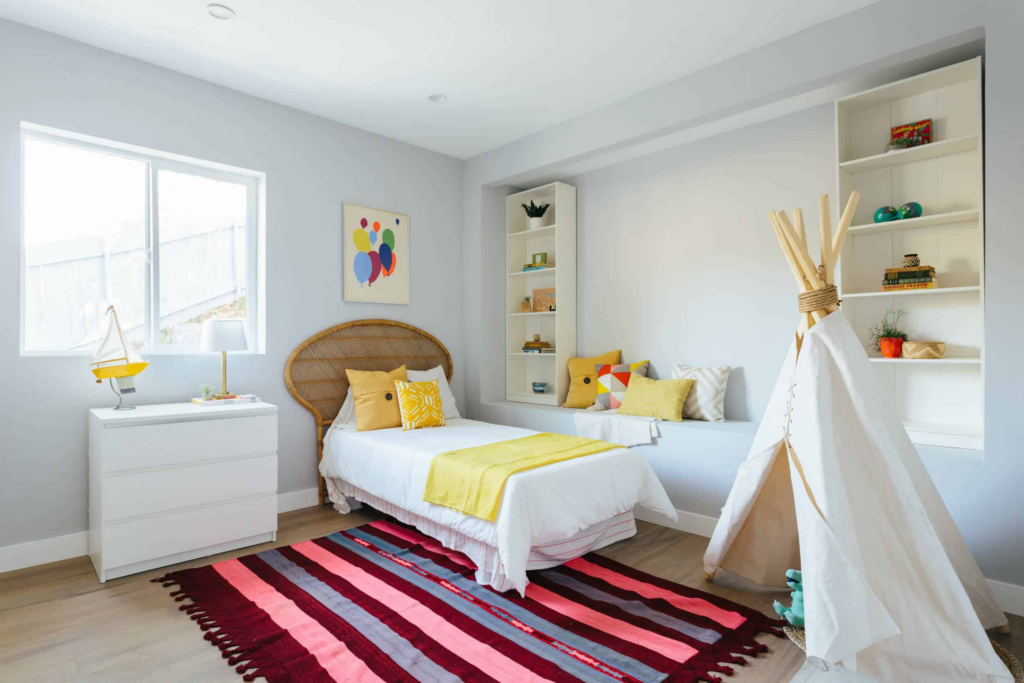Did you know about the power of color therapy on children? Yes, colors have a profound relationship with your child’s behavior and psychology. According to a recent study by the University of California, children under the age of 10 are particularly sensitive to the colors around them. The study shows that different colors impact learning, performance, and memory in various ways—and these effects can be long-lasting.
Color therapy, or chromotherapy, is not a modern concept. Ancient cultures like the Egyptians and Chinese practiced it 2,000 years ago, believing that each color holds specific vibrations affecting certain chakras in our body. Today, therapists still use chromotherapy as an alternative medicine.
In simple terms, different colors evoke specific moods or behaviors in your child. As a parent, it’s essential to choose the best color palette for your child’s room. Bright colors generally evoke positive feelings, while darker hues can stir up negative emotions. For instance:
- Red may trigger anger.
- Blue can evoke sadness.
- Yellow promotes happiness and improves memory.
- Green has a soothing effect, making it ideal for anxious children.
Children often spend a lot of time in their rooms, whether playing, studying, or relaxing. Therefore, selecting the right colors is crucial to creating a nurturing environment that supports their emotional well-being.
Here’s how you can shape your child’s mood with the right bedroom colors:

1. Boost Your Child’s Energy with Warm Colors
Colors like yellow, orange, and red are warm and energetic. They bring cheerfulness and uplift the energy in the room, helping to raise confident, happy, and friendly children. Use stronger shades sparingly to add warmth without overwhelming the space.
2. Create a Calming Atmosphere with Cool Colors
Colors like blue, teal, green, and turquoise create a soothing aura. These shades are perfect for hyperactive children or those who need a calming environment to focus and relax. A light blue wall, for example, can feel like an open sky—peaceful and serene.
3. Add a Natural Touch with Earthy Tones
Colors like brown, beige, and tan create a natural, grounding atmosphere. Pair these neutral tones with brightly colored furniture or accessories for a lively yet balanced look. Wooden flooring and earthy furnishings also enhance this natural aesthetic.
4. Promote Harmony with Neutral Shades
Neutral colors like white, ivory, and brown evoke harmony, peace, and stability. These versatile shades blend well with any other hue, allowing you to experiment with accent colors. Grey walls paired with white and black furniture can create a harmonious and sophisticated look.
5. Encourage Relaxation and Focus with Pastels
Soft shades like pink, peach, and mint provide a calming environment that helps children relax and concentrate. These colors are ideal for creating a study-friendly space where your child can focus and excel academically.
Things to Consider Before Choosing ColorsBefore finalizing your kid’s bedroom color scheme, consider the following:
- Does your child have a favorite theme (e.g., superheroes, books)?
- What is your child’s personality like?
- Do they share the room with a sibling?
By thoughtfully selecting colors, you can transform your child’s bedroom into a space that nurtures their emotional well-being and supports their growth.
Also Read : 12 Bathroom Tile Trends 2025 That Designers Swear By